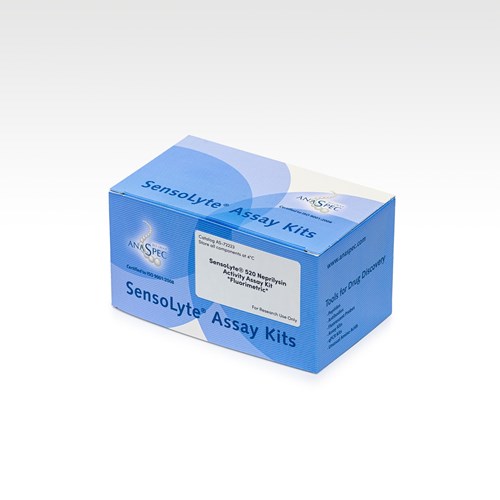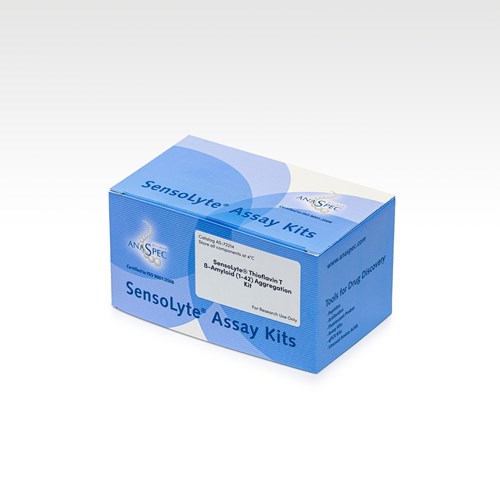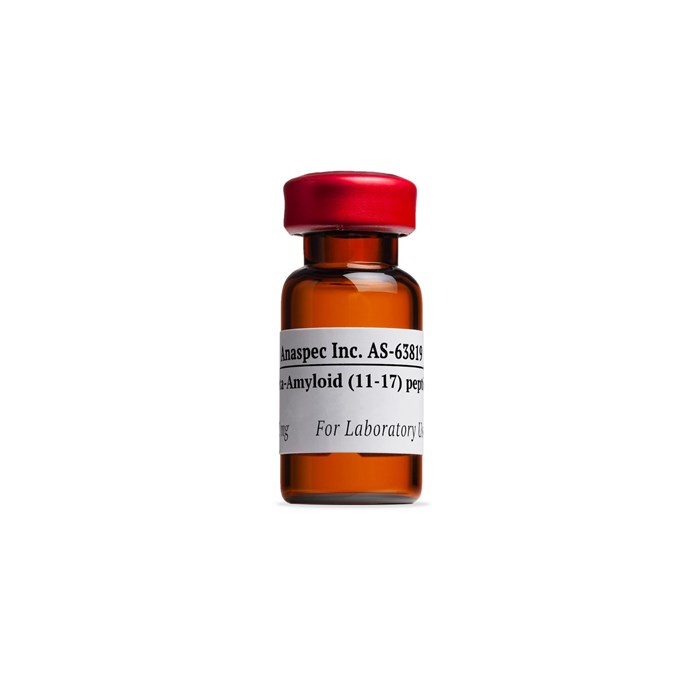Beta-Amyloid (11-17) - 1 mg
- Cat.Number : AS-63819
- Manufacturer Ref. :
-
Availability :
In production
This is a short fragment of the b-Amyloid peptide containing Histidine 13 and 14. Alzheimer’s beta amyloid peptides form Ab ion channels in lipid bilayers. It is postulated that ion channel activity of Ab is related to cytotoxic activity of Ab. Small peptides that contain the amino acid sequence of the predicted mouth region of the Ab channel pore can inhibit Ab ion channel activity. Histidines 13 and 14 have been shown to be essential for the peptide to inhibit Alzheimer’s disease Ab ion channel and cytotoxicity.
Pyroglutamyl (pGlu) peptides may spontaneously form when either Glutamine (Q) or Glutamic acid (E) is located at the sequence N-terminus. The conversion of Q or E to pGlu is a natural occurrence and in general it is believed that the hydrophobic γ-lactam ring of pGlu may play a role in peptide stability against gastrointestinal proteases. Pyroglutamyl peptides are therefore considered a normal subset of such peptides and are included as part of the peptide purity during HPLC analysis.
Specifications
| Chemistry | |
| Sequence one letter code |
|
|---|---|
| Sequence three letter code |
|
| Molecular Formula |
|
| Molecular Mass/ Weight |
|
| Modification | |
| Conjugation |
|
| Quantity & Purity | |
| Purity |
|
| Storage & stability | |
| Form |
|
| Storage Conditions |
|
| Activity | |
| Biomarker Target | |
| Research Area | |
| Sub-category Research Area | |
| Usage |
|
| Source | |
| Source / Species |
|
| Codes | |
| Code Nacres |
|
You may also be interested in the following product(s)


SensoLyte® 520 Neprilysin Activity Assay Kit Fluorimetric - 1 kit

